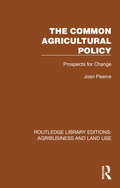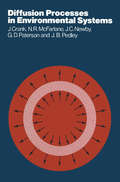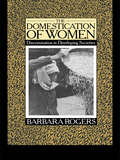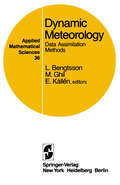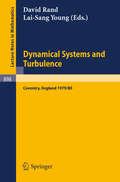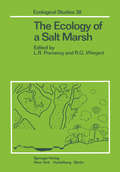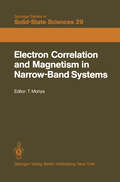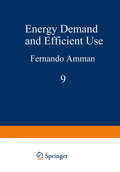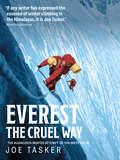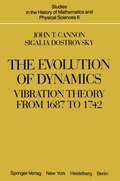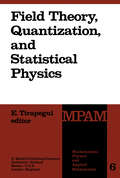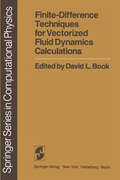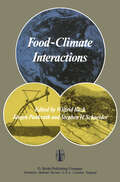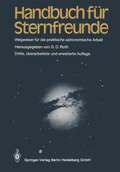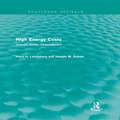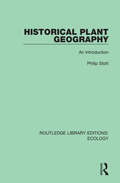- Table View
- List View
The Common Agricultural Policy: Prospects for Change (Routledge Library Editions: Agribusiness and Land Use #20)
by Joan PearceOriginally published in 1981, at a time when the EEC’s Common Agricultural Policy had remained largely unchanged, this book examines the criticisms of the CAP and analyses the pressures emanating from the budget and the various options which were available for tackling them. It then outlines the approaches that individual member states and others were likely to adopt, and assesses whether the need for action on the budget will be used as an opportunity to revise the CAP.
The Common Agricultural Policy: Prospects for Change (Routledge Library Editions: Agribusiness and Land Use #20)
by Joan PearceOriginally published in 1981, at a time when the EEC’s Common Agricultural Policy had remained largely unchanged, this book examines the criticisms of the CAP and analyses the pressures emanating from the budget and the various options which were available for tackling them. It then outlines the approaches that individual member states and others were likely to adopt, and assesses whether the need for action on the budget will be used as an opportunity to revise the CAP.
The Domestication of Women: Discrimination in Developing Societies (Social Science Paperback Ser. #Vol. 213)
by Barbara Rogers"The Domestication of Women is a feminist critique of international development agencies and programs. A researcher in development studies with past experience as a United Nations consultant, Barbara Rogers writes with a note of outrage about the pervasive biases against women that lead to wasteful and destructive bungling on the part of Western and Westernized men who dominate the field of development planning." - Amy Burce (Stanford University), Signs
The Domestication of Women: Discrimination in Developing Societies
by Barbara Rogers"The Domestication of Women is a feminist critique of international development agencies and programs. A researcher in development studies with past experience as a United Nations consultant, Barbara Rogers writes with a note of outrage about the pervasive biases against women that lead to wasteful and destructive bungling on the part of Western and Westernized men who dominate the field of development planning." - Amy Burce (Stanford University), Signs
Dynamic Meteorology: Data Assimilation Methods (Applied Mathematical Sciences #36)
by L. Bengtsson M. Ghil E. KällenOne of the main reasons we cannot tell what the weather will be tomorrow is that we do not know accurately enough what the weather is today. Mathematically speaking, numerical weather prediction (NWP) is an initial-value problem for a system of nonlinear partial differential equations in which the necessary initial values are known only incompletely and inaccurately. Data at the initial time of a numerical forecast can be supplemented, however, by observations of the atmos phere over a time interval preceding it. New observing systems, in particular polar-orbiting and geostationary satellites, which are providing observations continuously in time, make is absolutely necess ary to find new and more satisfactory methods of assimilating meteorological observations - for the dual purpose of defining atmospheric states and of issuing forecasts from the states thus defined. FUndamental progress in this area has been made in recent years and this book attempts to give a review and some suggestions for further improvements in the field of meteorological data assimila tion methods. The European Centre for Medium Range Weather Forecasts (ECMWF) every year organises seminars for the benefit of meteorologists and geophysicists of the ECMWF Member states. The 1980 Seminar was devoted to data assimilation methods, and this book contains selected lectures from that seminar. The purpose of the seminar was twofold: it was intended to give a basic introduction to the subject, as well as an overview of the latest developments in the field.
Dynamical Systems and Turbulence, Warwick 1980: Proceedings of a Symposium Held at the University of Warwick 1979/80 (Lecture Notes in Mathematics #898)
by D. A. Rand L. S. YoungThe Ecology of a Salt Marsh (Ecological Studies #38)
by L. R. Pomeroy R. G. WiegertEcologists have two long-standing ways to study large ecosystems such as lakes, forests, and salt-marsh estuaries. In the first, which G. E. Hutchinson has called the holological approach, the whole ecosystem is first studied as a "black box," and its components are investigated as needed. In the second, which Hutchinson has called the merological approach, the parts of the system are studied first, and an attempt is then made to build up the whole from them. For long-term studies, the holological approach has special advantages, since the general patterns and tentative hypotheses that are first worked out help direct attention to the components of the system which need to be studied in greater detail. In this approach, teams of investigators focus on major func tions and hypotheses and thereby coordinate their independent study efforts. Thus, although there have been waves, as it were, of investigators and graduate students working on different aspects of the Georgia salt-marsh estuaries (personnel at the Marine Institute on Sapelo Island changes every few years), the emphasis on the holo logical approach has resulted in a highly differentiated and well-coordinated long-term study. Very briefly, the history of the salt-marsh studies can be outlined as follows. First, the general patterns of food chains and other energy flows in the marshes and creeks were worked out, and the nature of imports and exports to and from the system and its subsystems were delimited.
Electron Correlation and Magnetism in Narrow-Band Systems: Proceedings of the Third Taniguchi International Symposium, Mount Fuji, Japan, November 1–5, 1980 (Springer Series in Solid-State Sciences #29)
by T. MoriyaSpeech by Toyosaburo Taniguchi Welcome my friends to the Third International Symposium, Division on the Theory of Condensed Matter, of the Taniguchi Foundation. The need is now greater than ever for Japan to consider how to strengthen and foster international understanding between nations, peoples and societies, and how to contribute towards the establishment of peace and prosperity in the world. For more than twenty years, I have been supporting a symposium on mathe matics in which distinguished scholars from allover the world have engaged in free discussions. In this symposium, all the participants live together in community style. I have heard from members of some of these study groups that this type of setup has helped to strengthen their ties and relationships with their colleagues on a personal basis. What developed in the mathematics group led me to reorganize and strengthen the Taniguchi Foundation only a few years ago through additional funding. In order to effectively translate the objectives of the Foundation into action with the funds available, it becomes necessary to select those fields which are not necessarily in the limelight of popular interest, which means those fields which, I am afraid, are low in funding. I would rather choose from modest unimpressive academic fields than for the Foundation, projects those that stand out in gaudy, gorgeous popular acclaim.
Energy Demand and Efficient Use (Ettore Majorana International Science Series #9)
by F. AmmanThe Fourth International School on Energetics was held in July 1980 at Erice, Sicily and was devoted to the subject of Energy Demand and Efficient Use. In contrast to the Third School, we chose to concentrate on the demand side of the energy equation. The initial emphasis was on the methodology for determining demand; but it soon became clear that it is necessary to control demand also. All too often energy policy is set by the large industrial nations, or those nations blessed with a plentiful supply of fossil fuels. It seemed to us important to have the views of some repre sentatives from the less developed countries. The manuscripts were collected and ordered by Ms. Diane Rolinski of Harvard University whose work was invaluable. Fernando Amman Richard Wilson Directors of the School The course would not have been possible without the financial support of the Italian Ministry of Public Education, Italian Min istry of Scientific and Technological Research, Italian National Research Council, National Electric Energy Council, National Nuclear Energy Council and Sicilian Regional Government. v CONTENTS Energy Demand Control in Energy Policy . . . . . . . . . . 1 J.M. Martin Energy in Europe: Demand Forecast, Control and Supply . . . . . . . . . . . . . 23 H.-F. Wagner Data Collection Methodologies-Introduction . . . . . . . . 99 R. Bending Industry ...
Everest the Cruel Way: Climbing Mount Everest at its hardest: the 1980 winter attempt on the infamous west ridge
by Joe TaskerOn 30 January 1981 Joe Tasker and Ade Burgess stood at 24,000 feet on the west ridge of Mount Everest. Below them were their companions, some exhausted, some crippled by illness, all virtually incapacitated. Further progress seemed impossible. Everest the Cruel Way is Joe Tasker's story of an attempt to climb the highest mountain on earth - an attempt which pushed a group of Britain's finest mountaineers to their limits. The goal had been to climb Mount Everest at its hardest: via the infamous west ridge, without supplementary oxygen and in winter. Tasker's epic account vividly describes experiences which no climber had previously endured. Close up and personal, it is a gripping account of day to day life on expedition and of the struggle to live at high altitude. Joe Tasker was one of Britain's best mountaineers. He was a pioneer of lightweight, Alpine-style climbing in the Greater Ranges and had a special talent for writing. He died, along with his friend Peter Boardman, high on Everest in 1982 while attempting a new and unclimbed line. Both men were superb mountaineers and talented writers.
The Evolution of Dynamics: Vibration Theory from 1687 to 1742 (Studies in the History of Mathematics and Physical Sciences #6)
by J. T. Cannon S. DostrovskyIn this study we are concerned with Vibration Theory and the Problem of Dynamics during the half century that followed the publication of Newton's Principia. The relationship that existed between these subject!! is obscured in retrospection for it is now almost impossible not to view (linear) Vibration Theory as linearized Dynamics. But during the half century in question a theory of Dynamics did not exist; while Vibration Theory comprised a good deal of acoustical information, posed definite problems and obtained specific results. In fact, it was through problems posed by Vibration Theory that a general theory of Dynamics was motivated and discovered. Believing that the emergence of Dynamics is a critically important link in the history of mathematical science, we present this study with the primary goal of providing a guide to the relevant works in the aforemen tioned period. We try above all to make the contents of the works readily accessible and we try to make clear the historical connections among many of the pertinent ideas, especially those pertaining to Dynamics in many degrees of freedom. But along the way we discuss other ideas on emerging subjects such as Calculus, Linear Analysis, Differential Equations, Special Functions, and Elasticity Theory, with which Vibration Theory is deeply interwound. Many of these ideas are elementary but they appear in a surprising context: For example the eigenvalue problem does not arise in the context of special solutions to linear problems-it appears as a condition for isochronous vibrations.
Exploration of the Polar Upper Atmosphere: Proceedings of the NATO Advanced Study Institute held at Lillehammer, Norway, May 5–16, 1980 (Nato Science Series C: #64)
by C. S. Deehr J. A. HoltetThis book is an ordered collection of tutorial lectures on the physical processes in the polar upper atmosphere given at the NATO Advanced Study Institute (ASI) on "The Exploration of the Polar Upper Atmosphere" held at Lillehammer, Norway, May 5-16, 1980. The polar cap is an important part of the high latitude atmosphere not only because of circulation and horizontal trans port in the neutral atmosphere and convection in the ionosphere, but also because of its unique energy sources and sinks. In addition, solar wind plasma is led into-the upper atmosphere by the geomagnetic field at the poles, and the polar cap is, as stated by Tutorial Leader Roederer in this volume, "the place where outer space meets earth". The atmosphere at lower latitudes is well-known to the ground-based observer, and the advent of satellite observations was simply the beginning of a new perspective. The exploration of the atmosphere at polar latitudes, however, proceeded in quite the opposite manner, and satellite maps of the polar caps may be compared with a relatively meagre set of ground-based data. Recent efforts to extend the polar observations from the ground have resulted in the need for a review of the physical principles and processes occurring in the polar upper atmosphere. The interdisciplinary nature of these efforts led to the emphasis here on a tutorial program.
Field Theory, Quantization and Statistical Physics: In Memory of Bernard Jouvet (Mathematical Physics and Applied Mathematics #6)
by E. TirapeguiFinite-Difference Techniques for Vectorized Fluid Dynamics Calculations (Scientific Computation)
by J. P. Boris M. J. Fritts R. V. Madala B. E. McDonald N. K. Winsor S. T. ZalesakThis book describes several finite-difference techniques developed recently for the numerical solution of fluid equations. Both convective (hyperbolic) equations and elliptic equations (of Poisson's type) are discussed. The em phasis is on methods developed and in use at the Naval Research Laboratory, although brief descriptions of competitive and kindred techniques are included as background material. This book is intended for specialists in computational fluid dynamics and related subjects. It includes examples, applications and source listings of program modules in Fortran embodying the methods. Contents Introduction 1 (D. L. Book) 2 Computational Techniques for Solution of Convective Equations 5 (D. L. Book and J. P. Boris) 2. 1 Importance of Convective Equations 5 2. 2 Requirements for Convective Equation Algorithms 7 2. 3 Quasiparticle Methods 10 2. 4 Characteristic Methods 13 2. 5 Finite-Difference Methods 15 2. 6 Finite-Element Methods 20 2. 7 Spectral Methods 23 3 Flux-Corrected Transport 29 (D. L. Book, J. P. Boris, and S. T. Zalesak) 3. 1 Improvements in Eulerian Finite-Difference Algorithms 29 3. 2 ETBFCT: A Fully Vectorized FCT Module 33 3. 3 Multidimensional FCT 41 4 Efficient Time Integration Schemes for Atmosphere and Ocean Models 56 (R. V. Madala) 4. 1 Introduction 56 4. 2 Time Integration Schemes for Barotropic Models 58 4. 3 Time Integration Schemes for Baroclinic Models 63 4. 4 Extension to Ocean Models 70 David L. Book, Jay P. Boris, and Martin J. Fritts are from the Laboratory for Computational Physics, Naval Research Laboratory, Washington, D. C.
Food-Climate Interactions: Proceedings of an International Workshop held in Berlin (West), December 9–12, 1980
by W. Bach J. Pankrath S. H. SchniederProceedings of an International Workshop held in Berlin (West), December 9-12, 1980
Frankreich: Grundwissen-Länderkunde Wirtschaft — Gesellschaft — Politik (Grundwissen - Länderkunden #1)
by Dieter Menyesch Henrik Uterwedde"Frankreich - Grundwissen" will grundlegende Daten und Informa tionen über wichtige ausgewählte Bereiche der Wirtschaft, Gesellschaft und Politik Frankreichs auf knappem Raum darstellen. Es versteht sich zugleich als erste Einführung und als Nachschlagewerk, das Daten und Informationen leicht und schnell abrufbar macht. Einen beson deren Raum nehmen dabei Schaubilder, Tabellen, Karten usw. ein, die auch für den Unterricht verwendbar sind. Ferner kann es mit konkreten Daten, einführenden Erläuterungen und weiterführenden Hinweisen eine nützliche Grundlage für die weitere Beschäftigung 1 mit dem Thema "Frankreich" zur Verfügung stellen. Von den frankreichkundlichen Gesamtdarstellungen der letzten Jahre (s.. Literaturverzeichnis) unterscheidet sich das vorliegende Buch in zweierlei Hinsicht: - zum einen wird die Behandlung der Probleme anhand von kon kretem Datenmaterial (soweit sich die Fragen datenmäßig erfassen lassen) in den Mittelpunkt gestellt, um dem Leser die Möglichkeit zu geben, eigene Beobachtungen anzustellen und sein Wissen durch eigene Arbeit zu vertiefen; - zum anderen werden die Daten - wo immer möglich - in ihrer zeitlichen Entwicklung der letzten 25 bis 35 Jahre vorgelegt, um die in diesem Zeitraum erfolgten Veränderungen sichtbar zu machen. Diese Schwerpunktbildung kann den bisherigen Frankreichdar stellungen eine weitere, bislang etwas vernachlässigte Dimension hinzufügen. Natürlich können Daten und Statistiken nicht für sich alleine stehen, sondern bedürfen eines landeskundlichen Erklärungs zusammenhangs. 1 Das Manuskript wurde in seinen Grundzügen vor dem Regierungswechsel vom Mai/Juni 1981 abgeschlossen; im Herbst 1981 erfolgte eine gründli che Überarbeitung, im Sommer 1983 eine Aktualisierung.
The Geological Evolution of the River Nile
by Rushdi SaidThis book gives the geological history of the river Nile since it started to excavate its course in the Egyptian plateaus in late Miocene time in response to the lowering sea level of the desic cating Mediterranean. It formed a canyon longer, deeper, and just as awe inspiring as the Grand Canyon, Arizona. The canyon was transgressed by the advancing Mediterranean as it started filling during the early Pliocene, and since then by a number of rivers which ebbed and flowed as they succeeded one another. The modern Nile is a recent and humble successor to mighty rivers which once occupied the Nile Valley. Dallas, Texas Rushdi Said August 1981 Acknowledgments This book is based on field work carried out in Egypt during the seasons 1961-1978 while the author was a member of the Com bined Prehistoric Expedition sponsored by Southern Methodist University, the Polish Academy of Science, and the Geological Survey of Egypt. Grateful acknowledgment is made to Professor Fred Wendorf, leader of the Expedition, and to several members for their fruitful discussions. Notable among these arepr. Claude Albritton, Southern Methodist University, and Dr. J. De Heinze lin, University of Ghent, Belgium. The field work was aided by geologists M. S. Abdel Ghany and A. Zaghloul of the Geological Survey of Egypt. The drafting was by Reed Ellis and Hoda S. Ar manious. I am also grateful to Dr. M. K.
Geology and Water: An introduction to fluid mechanics for geologists (Developments in Applied Earth Studies #1)
by R.E. ChapmanWater is one of the world's threatened resources: it is also a substance of importance in Geology. For some years I have felt the need for a book that sets out the fundamentals of fluid mechanics, written for geologists rather than engineers. The efforts to repair my own deficiencies in this respect led me along various unfamiliar paths, few of which were unrewarding. This book is the result of my journeys through the literature and as a geologist in several parts of the world. It has been written for students of geology of all ages, in the simplest terms possible, and it has one objective: to provide a basis for an understanding of the mechanical role of water in geology. It has not been written for experts in ground water hydrology, or specialists in the fluid aspects of structural geology: it has been written for geologists like me who are not very good mathematicians, so that we can take water better into account in our normal geological work, whatever it might be. The fundamentals apply equally to mineralization, geochemistry, and vulcanology although they have not been specifically mentioned. It has also been written for the university student of geology so that he or she may start a career with some appreciation of the importance of water, and understanding of its movement.
High Energy Costs: Uneven, Unfair, Unavoidable? (Routledge Revivals)
by Hans H. Landsberg Joseph M. DukertHigh energy prices affect nearly the whole of the American population, arguably affecting some consumer groups more than others. Although originally published in 1981, the issues explored in this study such as who is affected most by energy price increases, regional differences and what can or should be done in the United States in regards to energy costs are still as relevant today as they were then. These papers attempt to directly address these concerns in the wake of the 1979-80 price shock in America and to advise what action can be taken to allay these concerns. This title will be of interest to students of environmental studies and economics.
High Energy Costs: Uneven, Unfair, Unavoidable? (Routledge Revivals)
by Hans H. Landsberg Joseph M. DukertHigh energy prices affect nearly the whole of the American population, arguably affecting some consumer groups more than others. Although originally published in 1981, the issues explored in this study such as who is affected most by energy price increases, regional differences and what can or should be done in the United States in regards to energy costs are still as relevant today as they were then. These papers attempt to directly address these concerns in the wake of the 1979-80 price shock in America and to advise what action can be taken to allay these concerns. This title will be of interest to students of environmental studies and economics.
Historical Plant Geography: An Introduction (Routledge Library Editions: Ecology #12)
by Philip StottOriginally published in 1981 Historical Plant Geography is an introductory treatment of historical plant geography and stresses the basic theoretical frame of the subject. The book is about neither the study of vegetation nor the concept of the ecosystem, instead focusing on the much older tradition concerned with analysing the geographical distribution of individual species and natural plant groups. Important areas are discussed, such as global plate tectonics and sea-floor spreading, plant maps are introduced and there is a basic treatment of recent advances in plant taxonomy. The book will appeal to students and academics of geography, botany, ecology and environmental sciences.
